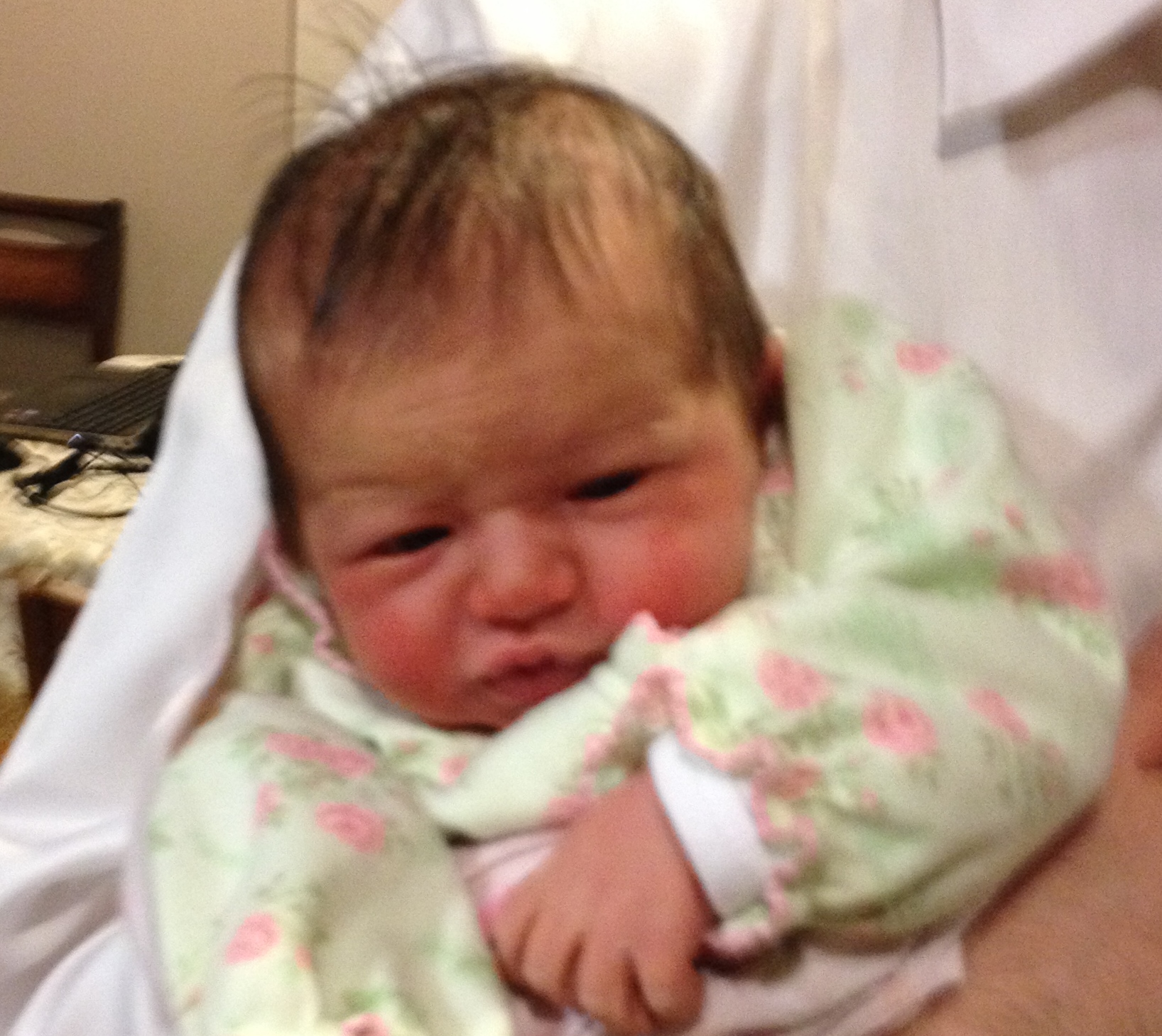
by a
Baltimore Mother
It was a
cold and snowy day last winter, and all the schools had canceled classes. I was
anxious about my appointment with my midwife. I was starting my second
trimester and had a few concerns I wanted to check out; I did not want to wait
another week to see her. Oh well! My appointment is for sure cancelled, I
thought. Besides, how could I go with my two energetic boys?
I was surprised when Bayla Berkowitz, my midwife, texted:
“Do you want to keep your appointment?”
“Yes!” I texted back, “but my boys are home!”
“No problem, bring them along,” was her prompt reply. “I
have a lot of toys they can play with.”
I felt so relieved. When we arrived, Bayla Berkowitz and
her partner Tova Brody’s kids were all there. My boys played with the kids and
toys, while I was checked by my two midwives. I heard the pleasant chattering
of our kids in the background and saw the heavy snowflakes drifting down
outside the window. It was so peaceful – so pleasant and natural. This was the
feeling I had throughout my whole home birth experience, from the first
appointment through the very last postpartum visit. It was incredible to feel
so well taken care of, reassuring to know I could always text my midwife a
question and get a text reply right back!
*
* *
I had
used an Ob-Gyn for my first two pregnancies. This was my first time using a
midwife. Yet when I made the decision to use a midwife – and, then, to have a
homebirth! – I never imagined how awesome it would be. My midwives, Bayla and
Tova, are super knowledgeable in every area pertaining to pregnancy, labor,
delivery, and just about everything else! When I told them I craved protein,
Tova gave me ideas for protein-rich meals and snacks. At one appointment, I
complained of back pains. Bayla gave me names of different kinds of
practitioners who specialize in prenatal patients with back pain. At every
appointment, they would ask a whole slew of questions and give me all kinds of
health tips and alternatives. I was always taken in right away – no waiting –
and they gave me as much time as I needed. I felt like their only
patient.
Another wonderful service my midwives provided was “village
pre-natals.” These are bimonthly
group meetings with all their patients who are due around the same time. They
would educate us on different topics like prenatal testing, nutrition,
postpartum, and more. It was great to meet other women who were experiencing
the same aches and pains, to share ideas and gather strength from each other.
In my group, there were five women who were having a homebirth for the first
time. We each had our own story of why and how we chose midwifery and home birthing.
As our due dates got closer, Bayla and Tova asked us about our plans for
self-care after we had our babies. They emphasized how important it is to rest,
eat well, and stay in bed for the first two weeks. With our due dates drawing
nearer, we wished each other well. We couldn’t wait to meet again with our
babies and hear about each others’ experiences!
I was so excited and a bit nervous about how all this would
turn out. And then I went into labor!
*
* *
I awoke
at
At
There was another knock; this time it was Bayla. She came
in smiling, a large bag in hand. Bayla went to my room and set up all of her
supplies. She took my blood pressure, temperature, pulse, and monitored the
baby’s heartbeat. Then Tova walked in with a whole bag of “shtick” to help a
mom through labor.
“Can I eat a snack?” I asked.
“Yes!” Bayla said, “It will give you strength.” I joined my
kids, who were coloring and eating breakfast with my mother and husband. I
munched on peanuts. Meanwhile my cleaning lady was zipping around cleaning
maniacally. After all, how often does she get stuck in someone’s house while
they are giving birth?!
“What are you doing?” my four- year-old son asked, when he
saw me close my eyes and rock back and forth breathing slowly. “Mommy is doing
an exercise to help our baby come.” They were so excited! It was time for them
to go to school. I hugged them tightly and waved goodbye as my mother drove
them to their carpools. It was around
I went back to my room, where Bayla and Tova were finished
preparing their equipment. Tova monitored the baby’s heartbeat, and both
supported me through some intense moments. Tova stroked my hair and they both
softly shared words of positivity and encouragement. Finally, my baby was born
and was placed in my arms right away. It was
“Tell your husband if it’s a girl or a boy,” said Tova. It
felt good being involved. “It’s a boy!” I shouted joyously to my husband! (We
had guessed that it would be a girl.) As I held the baby close, Bayla and
Tova calmly performed CPR on him because he was still not breathing. I sat
there cooing to my precious baby while Bayla and Tova expertly encouraged my baby
to breathe on his own, which he did. They were so calm and confident that I
didn’t suspect anything was awry. I thought it was a normal procedure. (I later
found out that up to 10 percent of babies do not start breathing immediately.
If I had been in the hospital, however, it would have been a frantic and
tumultuous scene. I am grateful that he was able to stay attached to his cord
and receive oxygen the entire time.)
I started nursing my baby right away in my own comfortable
bed. They let me nurse for as long as I wanted. Then Tova weighed him while
Bayla helped me take a shower. I put on my comfy robe and climbed into bed. I
felt refreshed, energized, and so excited. But wait, I had just delivered a
baby! It felt surreal! Bayla and Tova tucked me in, cleaned everything up, and
left me with strict instructions to stay in bed and call or text with any
questions at any time. “We will be back tomorrow for a home visit,” they said.
Oh, and my cleaning lady congratulated us on our new baby when she left!
“You look so happy,” my husband commented. “You don’t look
like you just had a baby,” my mother said when she came to visit me later on. I
was feeling so relieved and overwhelmingly happy. “Thank You Hashem,” I
whispered, “for this marvelous experience!”
*
* *
I felt so
supported and understood by my midwives. B”H, I recuperated very
quickly, having followed their recommendations. Around eight weeks later, our
due-month group reunited to share our experiences, this time with babies in our
hands instead of our bellies. It was amazing to hear about the different birth
situations Bayla and to Tova had expertly navigated through. The one theme we
all shared was how well taken care of we felt throughout our individual
birthing journeys!
The
Midwife Model of Care
by Bayla
Berkowitz, CNM
Birth is a natural part of
life. It has occurred for thousands of years without much intervention at all.
In our culture, birth most commonly happens in a hospital, a place ordinarily
reserved for seriously ill patients. Does it have to be that way?
While some
high-risk women may require procedures that can only be done in a hospital, for
low-risk women with healthy pregnancies, giving birth at home is a safe
alternative. In most of the world, including
Midwives
practice in the
I am a
CNM. After getting my master’s from midwifery school at the
Midwives
are thoroughly trained in caring for the normal, healthy woman and newborn
throughout pregnancy, birth, and postpartum. We learn to recognize the subtle
signs when something is trending out of the realm of normal. If a pregnancy or
birth starts to become anything other than low risk, we try various ways to bring
it back to baseline, or we consult/refer the client out to a doctor/hospital.
We provide standard of care, evidence-based testing and procedures. We give
research and informed consent options to our clients so they understand risks
and benefits and can make the best decisions for themselves, their babies, and
their families.
In terms
of homebirth supplies, we bring the birth center to you! We have almost all of
the emergency equipment they have in the hospital except the Operating Room,
NICU, and an epidural. We bring oxygen, resuscitation equipment, medications
for hemorrhage, newborn medications, suturing supplies, IV fluids, antibiotics
- a whole arsenal of supplies! Midwives are certified in CPR and neonatal
resuscitation. We are trained to handle emergencies, including postpartum
hemorrhage, shoulder dystocia, neonatal resuscitation, and more. If
complications arise at home that need more attention, we are ready to stabilize
and transfer to the hospital. Rarely are homebirth transfers done under emergency
conditions. We are always looking for warning signs early on, so we can prepare
for transfer before it becomes urgent.
At a
homebirth, we always have two people present, usually two midwives or a midwife
and trained assistant, so there is double the observation and wisdom. As
opposed to a hospital, where there is one doctor or nurse caring for multiple
patients, o
Many
families choose homebirth because they feel safer and more comfortable in their
own home. Hospitals can be scary for many. Especially, now, with COVID-19, many
women are reconsidering whether they want to leave their homes and possibly be
exposed to the virus. Even in ordinary times, the fear alone can precipitate a
fight-or-flight response and cause labor to stall. The transfer, while in
active labor, to the hospital in the car, registration, meeting new staff, and
getting settled can be difficult and disruptive. Staying at home in your own
space with people you know and are comfortable with allows labor to progress
naturally and effectively. Homebirth patients have significantly lower rates of
infection, intervention, and instrumental/surgical deliveries.
We are
often asked about insurance. Midwives are allowed to accept insurance, but most
homebirth midwives do not because it is simply not financially feasible.
Midwives choose to provide patient-centered, personalized care and keep their
practices small in order to provide exceptional, individualized care. We want
to get to know our clients well, ensure they are maintaining a healthy
lifestyle, and see that their pregnancies are progressing safely.
I am so
grateful to have answered this calling and taken this career path in supporting
women as they empower themselves and grow their families.






